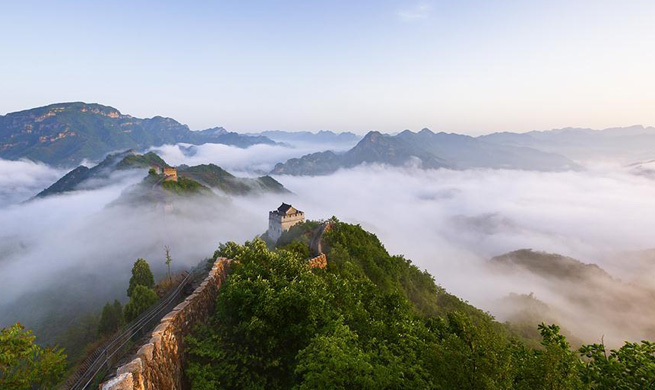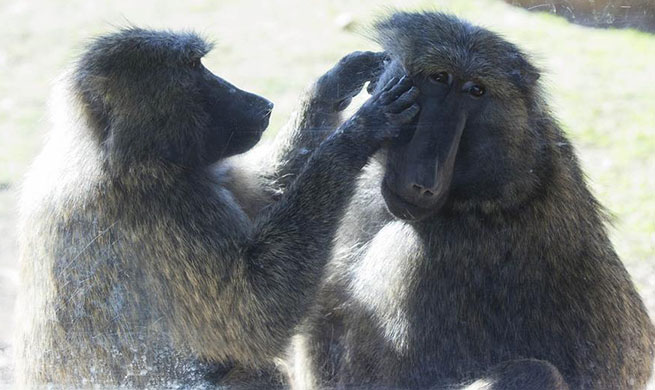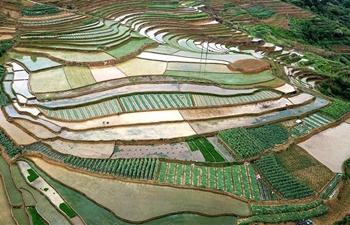YINCHUAN, May 14 (Xinhua) -- A highway runs along the edge of China's eighth largest desert, the Maowusu, sprawling fields of desert plants and a large peony field can be seen here, the latter rarely seen in the desert.
The 53 hectares of peonies are owned by the Great Wall Water Supply Ltd. of Ningxia Hui Autonomous Region, which is testing the plantation of the flowers as an alternative desert plant.
"Ordinary desert plants like willow and date trees are effective to curb erosion and fight sandstorms, but it is difficult to make money from them, so we decided to nurture plants that have both economic and environmental gains," said Zhang Shengren, a peony specialist and manager of the field.
The Great Wall company started planting peonies in the desert in 2015 but efforts had failed until Zhang came to the company in 2016. Zhang had spent 10 years studying peony plants in Japan.
"Peonies like damp and cold conditions, and the desert is far from an ideal place for them. But on the other hand, once the plants survive, their roots go rather deep and can live to 100 years, so they are also expected to be effective in curbing sand erosion," Zhang said.
The Maowusu desert covered over 70,000 square kilometers in 2005 covering areas of Ningxia, Shaanxi and Inner Mongolia region in China's northwest, but its area has been shrinking over the past years, due to consistent environment efforts.
Average precipitation in Ningxia is only 200 millimeters every year, and evaporation is over 1,600 millimeters. "Water is rather precious here, we keep the water dripping device as close to the seed roots as possible," Zhang said.
Peonies consume around 45,000 cubic meters per hectare, more than other desert plants. "As peonies grow, their roots will go deep, and water consumption will drop," he said.
From March to October every year, Zhang spends most of his time in the field. In April this year, the plants were hit by sudden frost when temperatures dropped below zero degree Celsius. Zhang and farmers sprayed anti-freeze liquid and added nutrients to the plants, but still, many buds died.
After the frost, Zhang selected plants that had endured harsh weather, for seedling.
"This is a whole new challenge for me. The most important job is to find the type of peony that can survive and thrive in the desert for seedling and explore a set of scientific management methods for the plant," he said.
The Great Wall company plans to expand the peony field by five-fold. This year the company will sell 400,000 small peony plants, with each plant around 2 yuan (30 U.S. cents).
The cost for growing peonies is about twice that of other desert plants, but the returns are expected to be higher.
"Peony petals can be made into tea, seeds are used to extract oil, and the roots are a type of traditional Chinese medicine," he said.
"I hope there will be downstream industries so that jobs will be created for people who live around the desert," he said.

















